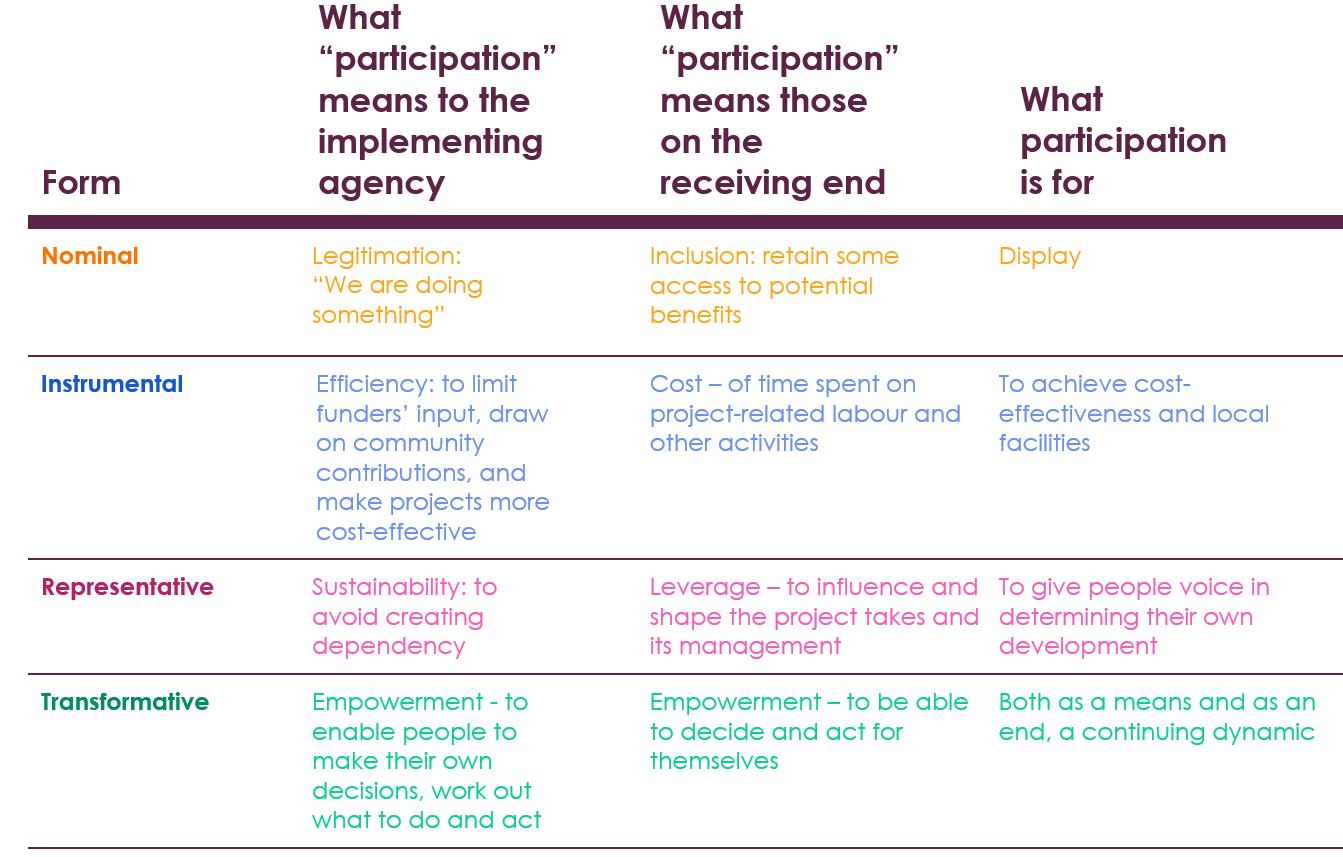Idea 03 - What does good participation look like?
There have been lots of words written about people’s participation in our society of one person one vote. One of the most well-known is perhaps Sherry Arnstein’s ladder of participation from 1969. It is a way of thinking about the depth of people’s participation in government, and the ladder implies climbing to the higher forms of participation.
Arnstein (1969) Ladder of citizen participation
The lower of the three zones represents the government doing things to citizens, where the power lies mainly with selected consultants and pollsters. The middle zone is where the government does things for citizens, where the power lies mainly with staff hired to deliver a pre-determined programme. The top zone is where the government does things with its citizens, and the power lies with communities.
Think of an organisation you’re familiar with. How high up the ladder would they be?
Relatedly, we’re rather fond of Sarah White’s matrix from 1996 which, like Sherry Arnstein, helps describe different levels of participation so we can tell what good looks like. In this case, though, Sarah White’s matrix tells the story of what might be going on out-of-sight. What might the motivations of different actors be? And what does that tell us about their values?
In White’s matrix, the ladder is upside down. Nominal participation is worst, and transformative is best.
If you think of an organisation, you’re familiar with, where would they be on this matrix?
What do you think about that?
If you want to geek-out on ladders and matrices of participation, here’s a great place to go.


